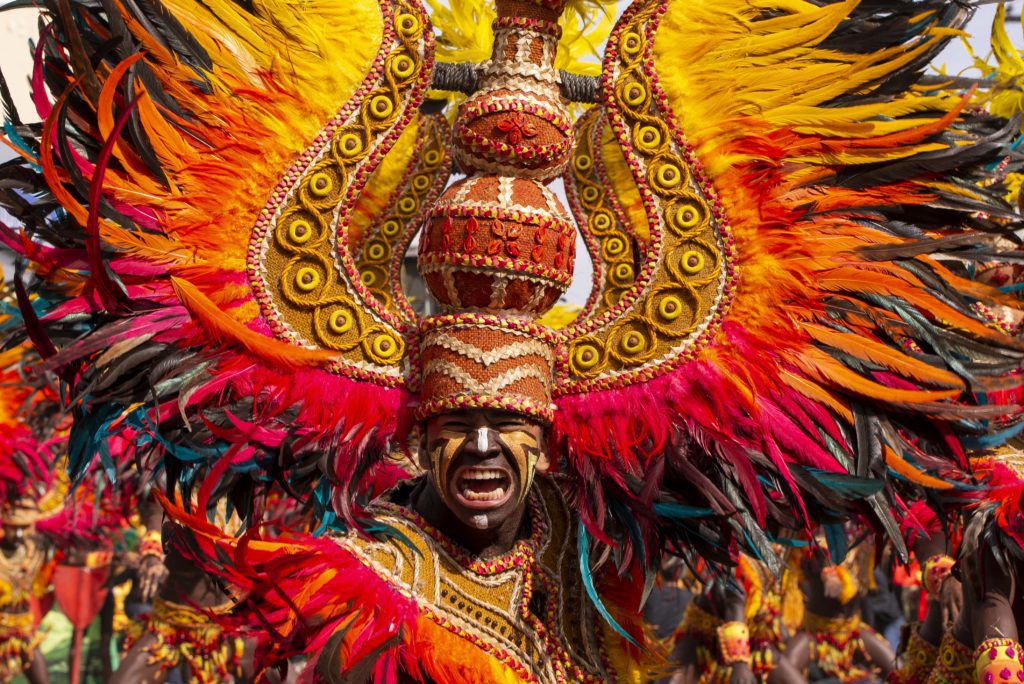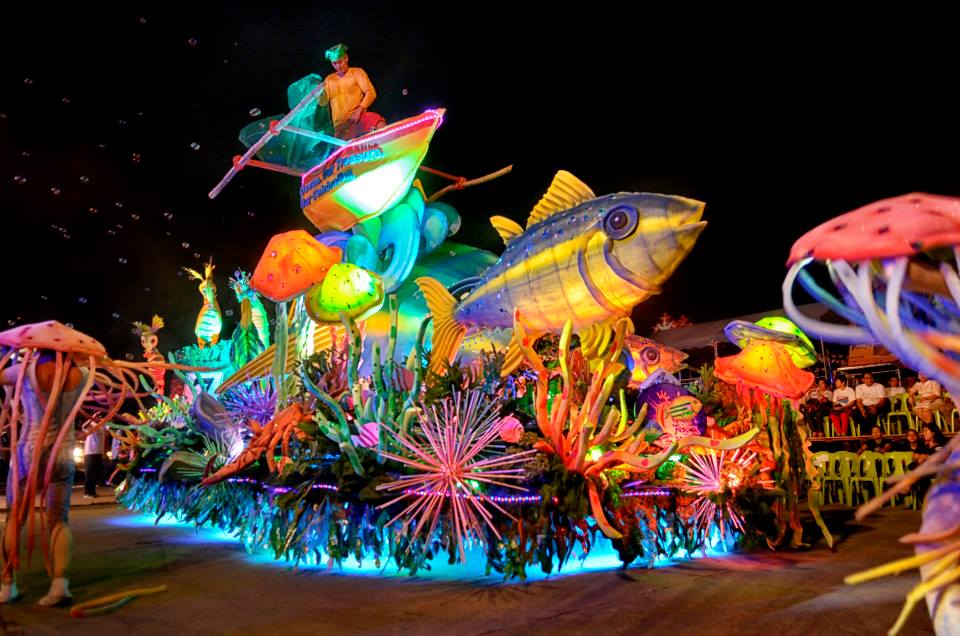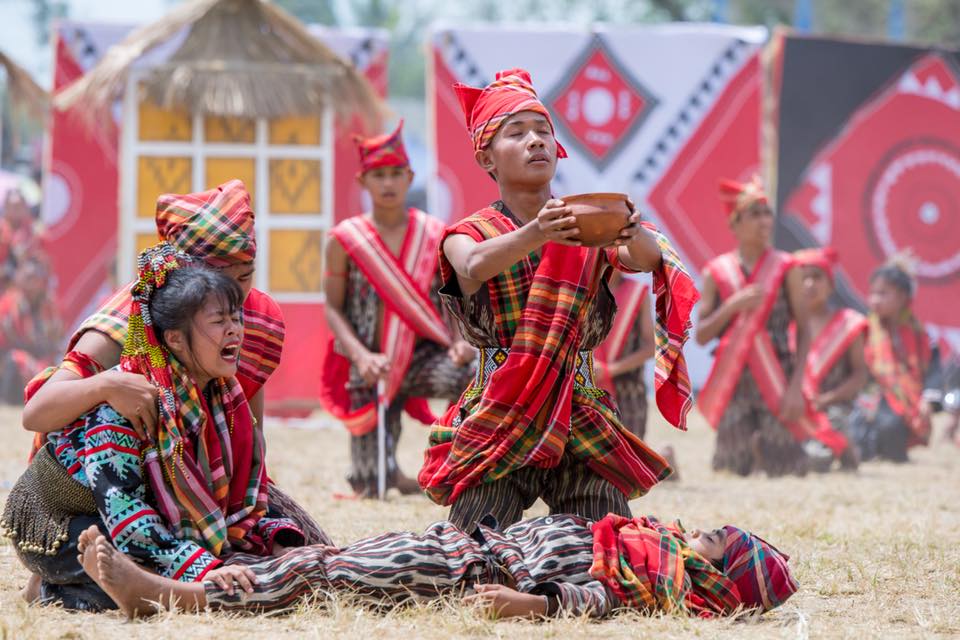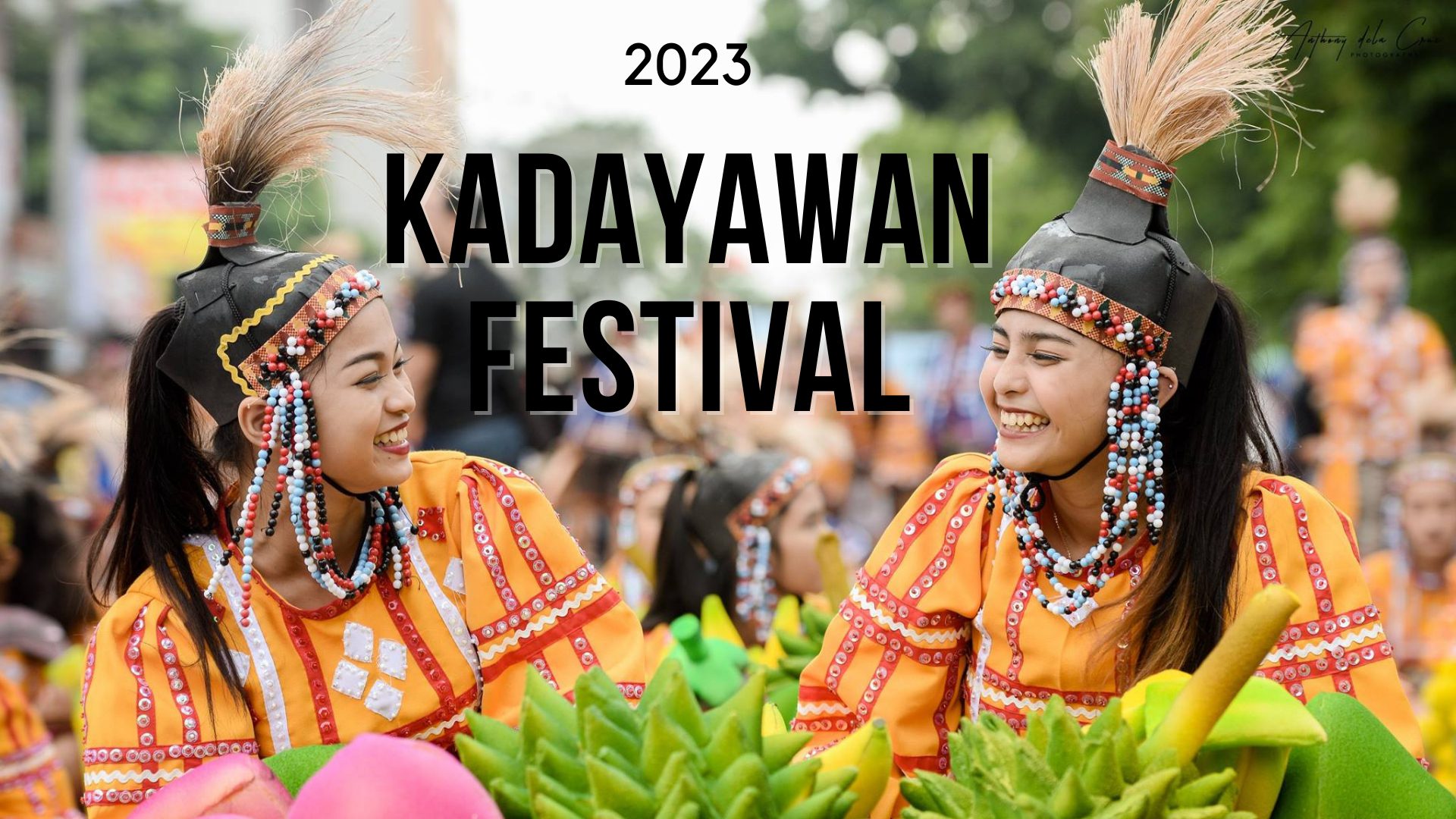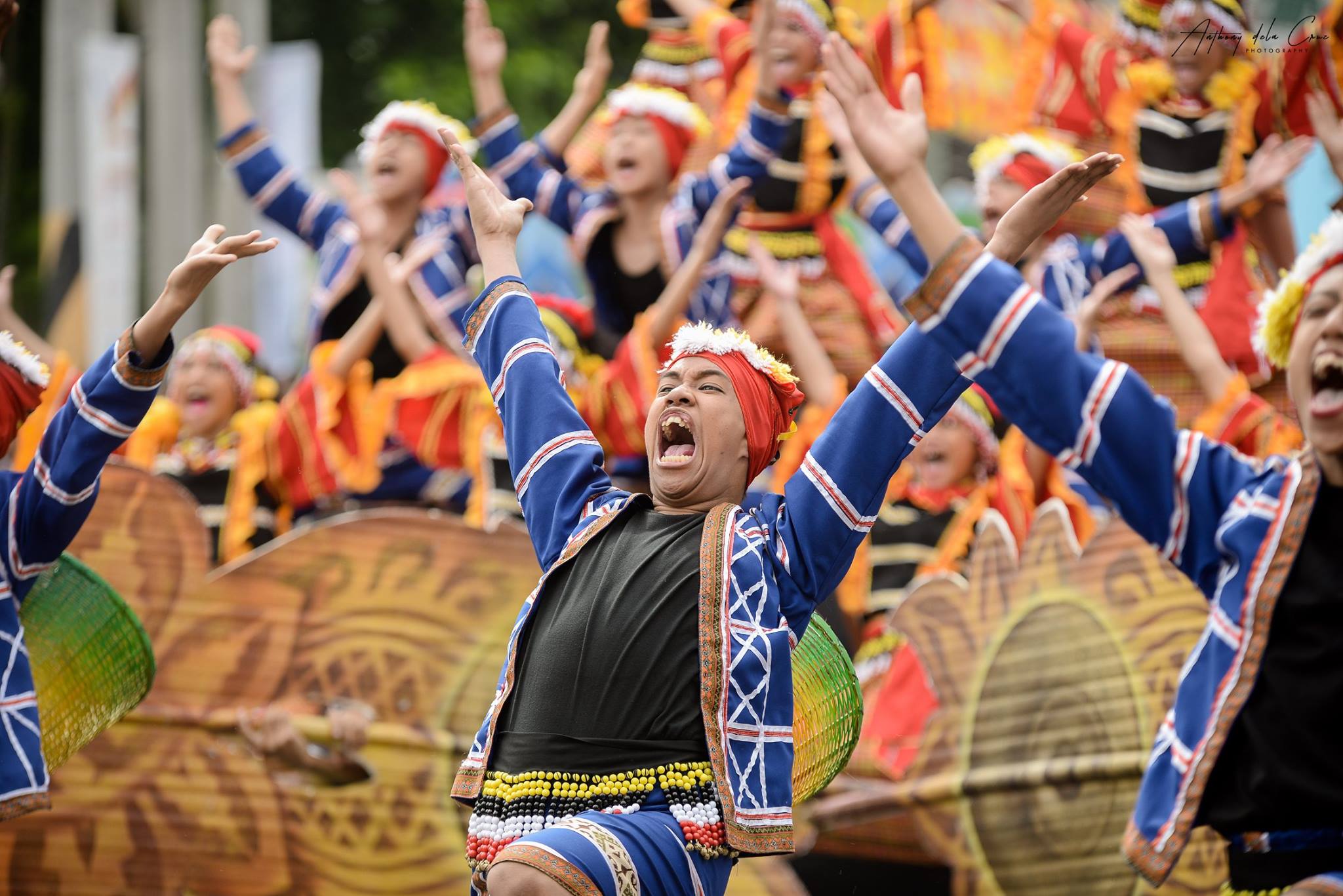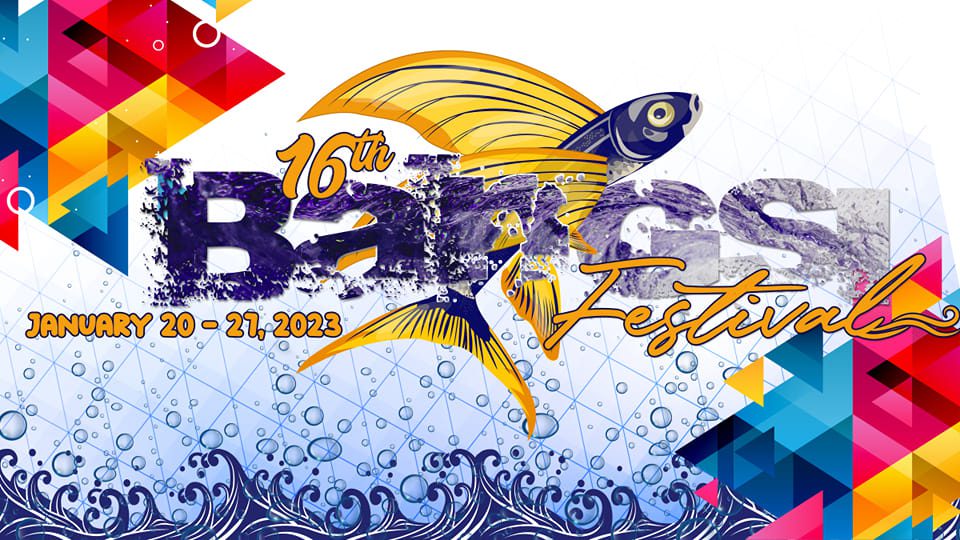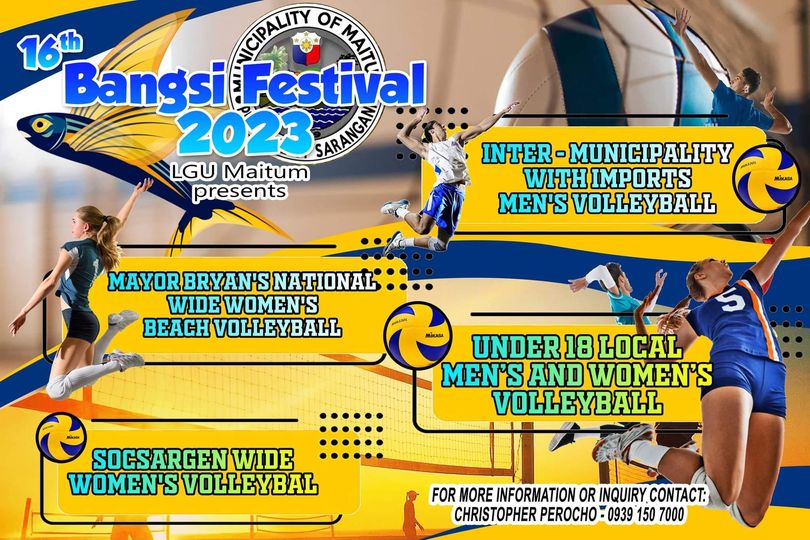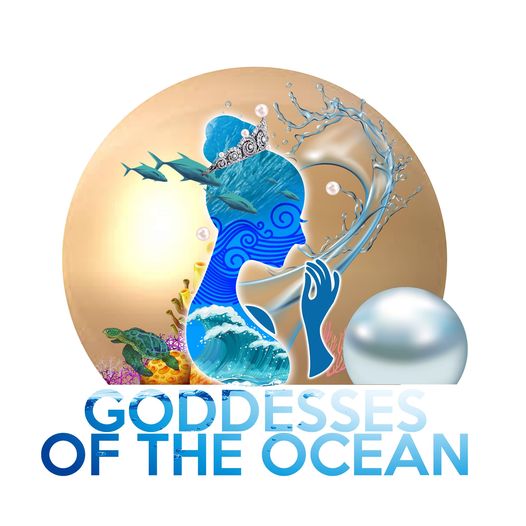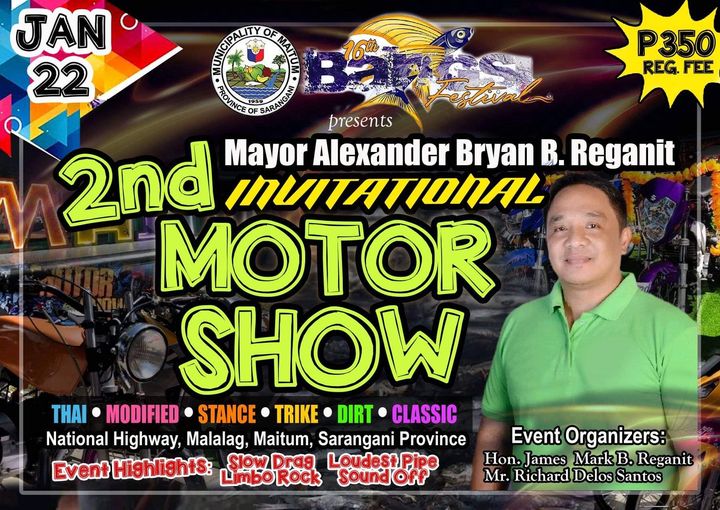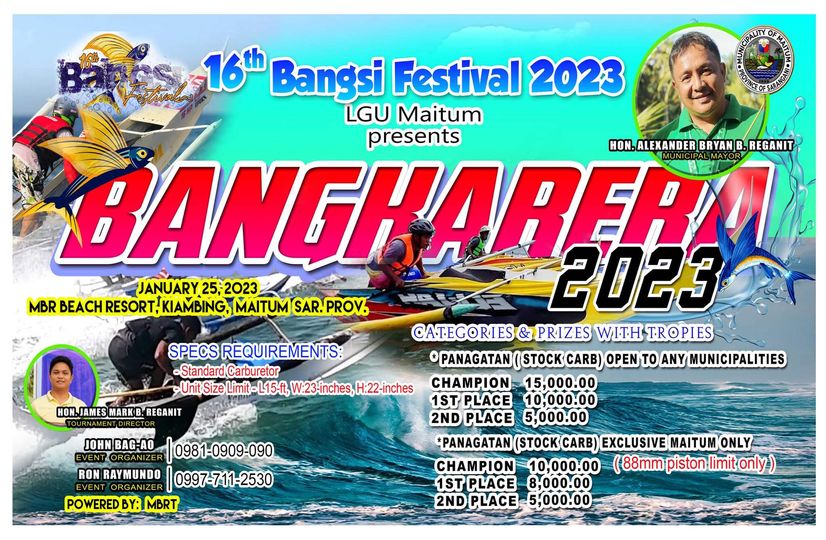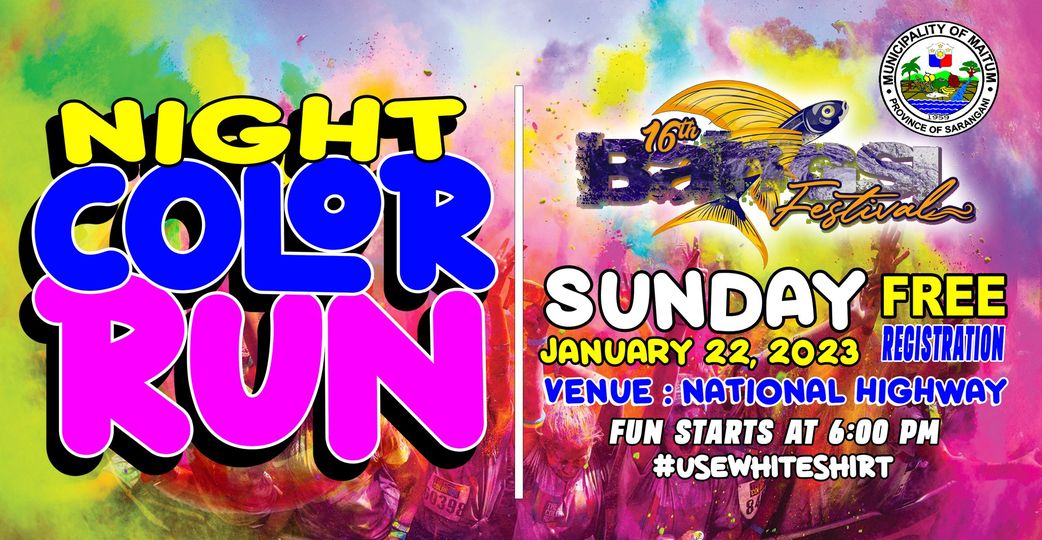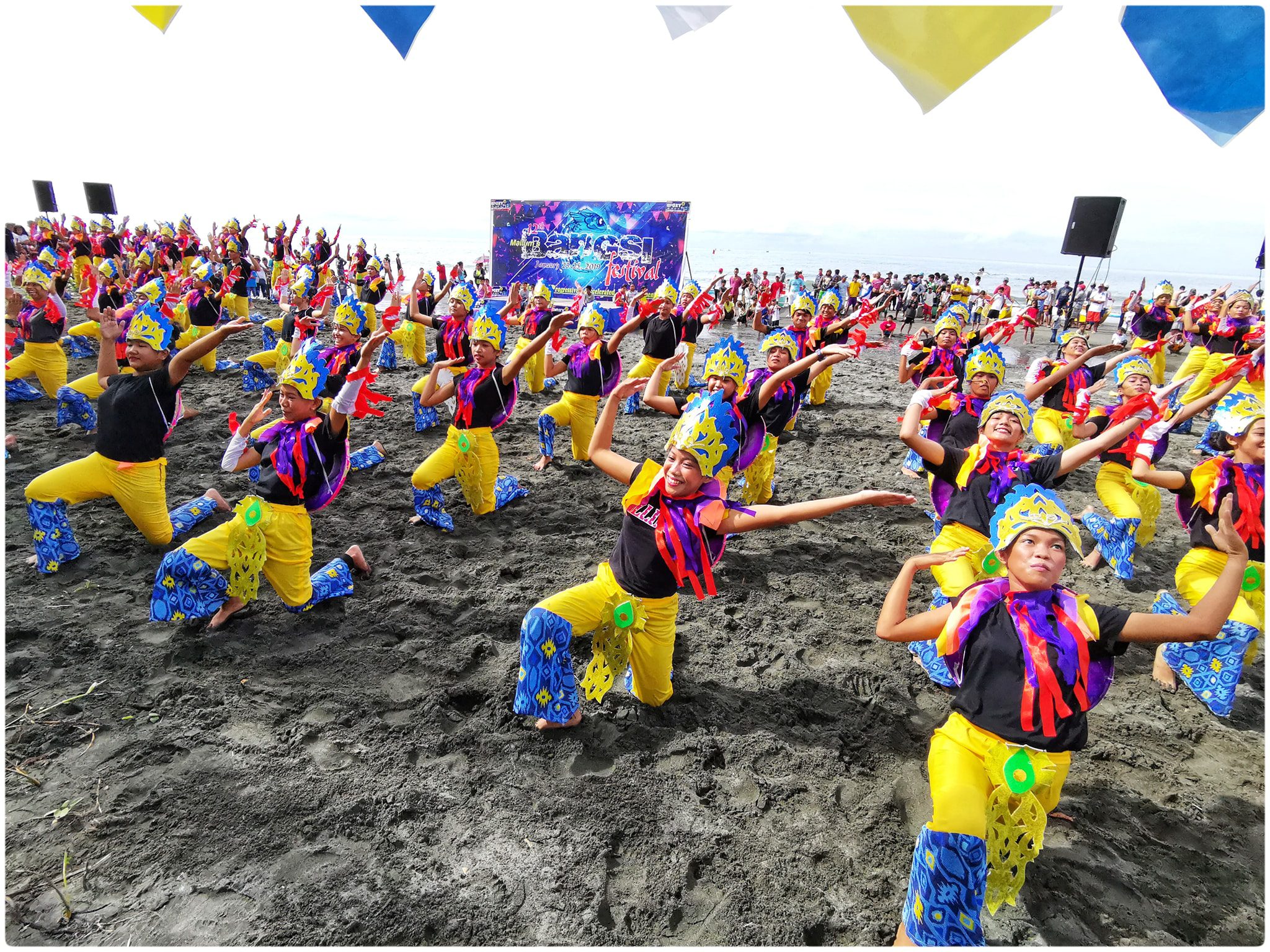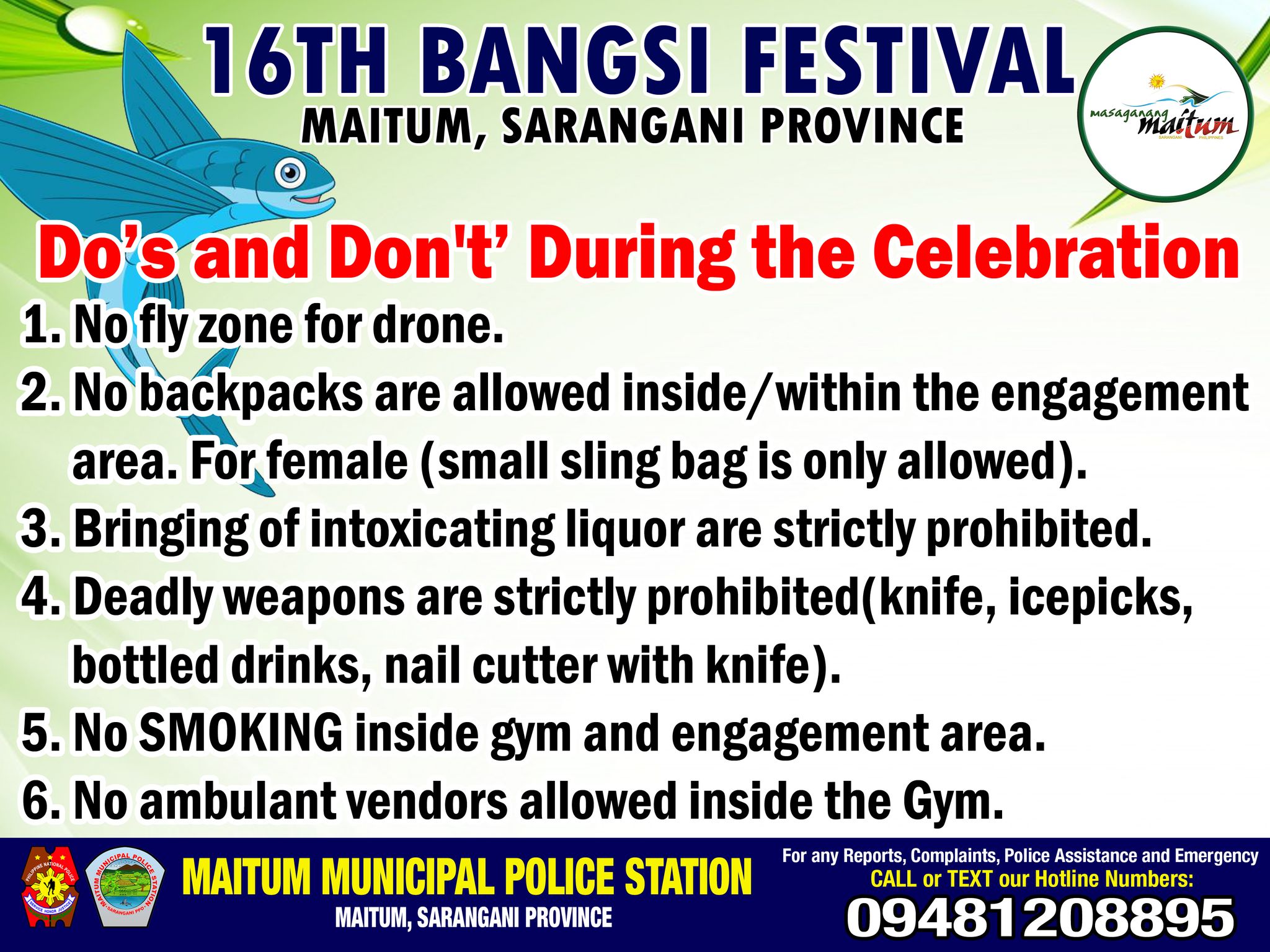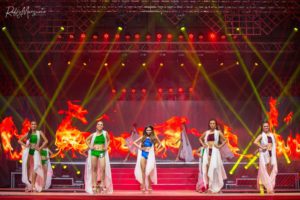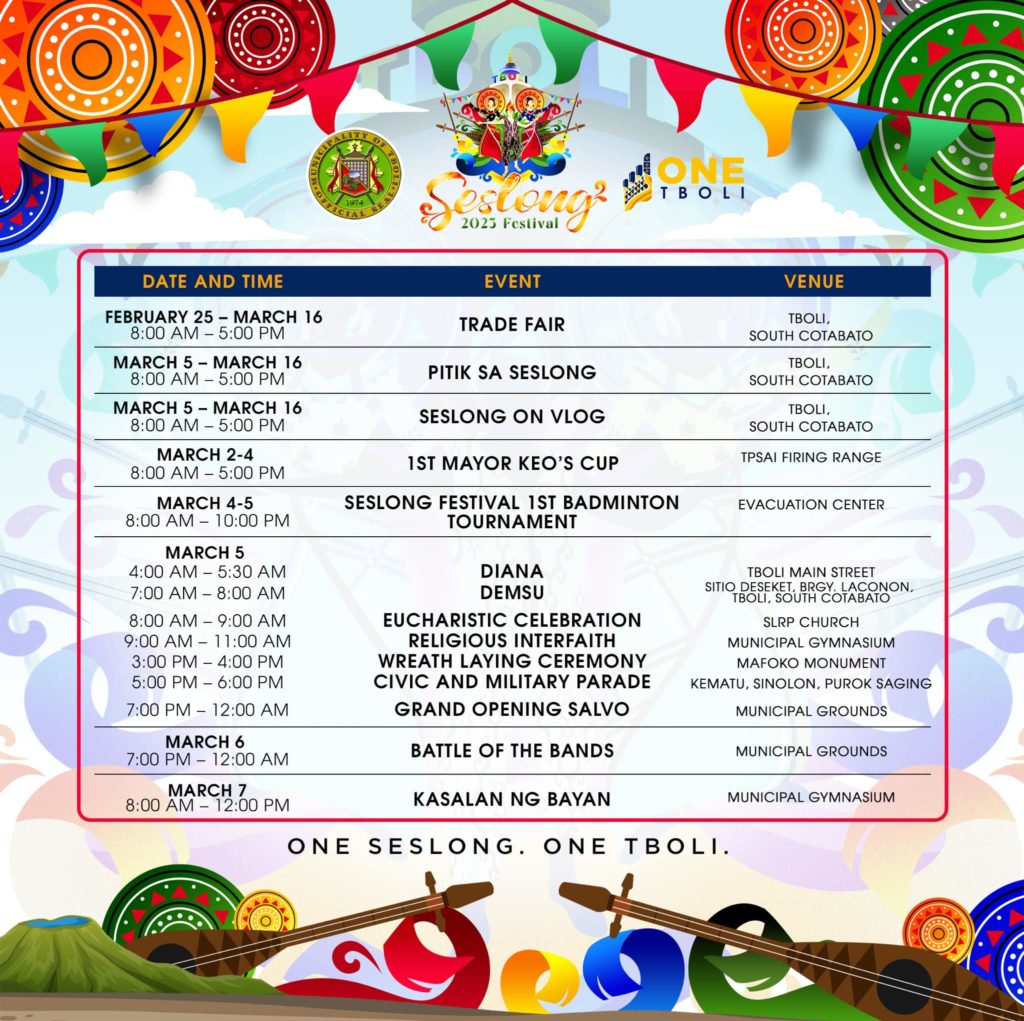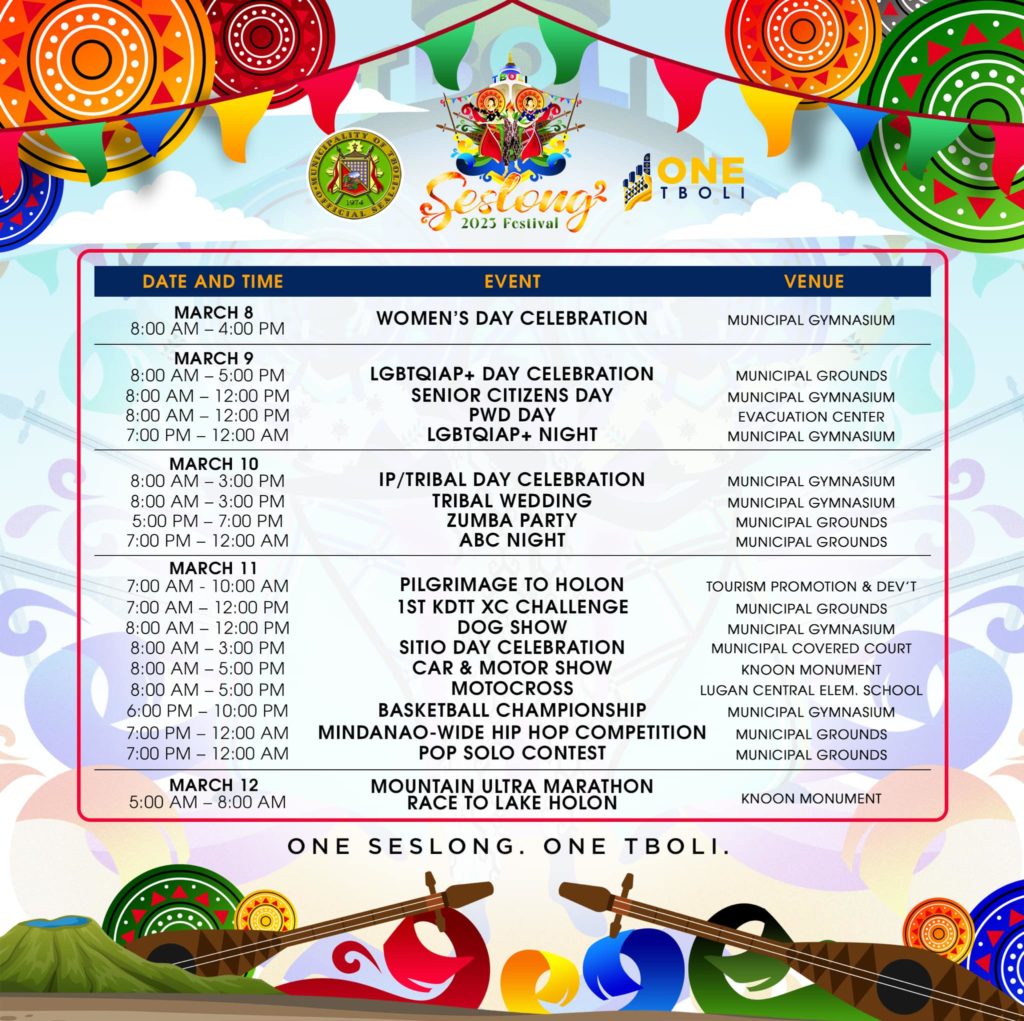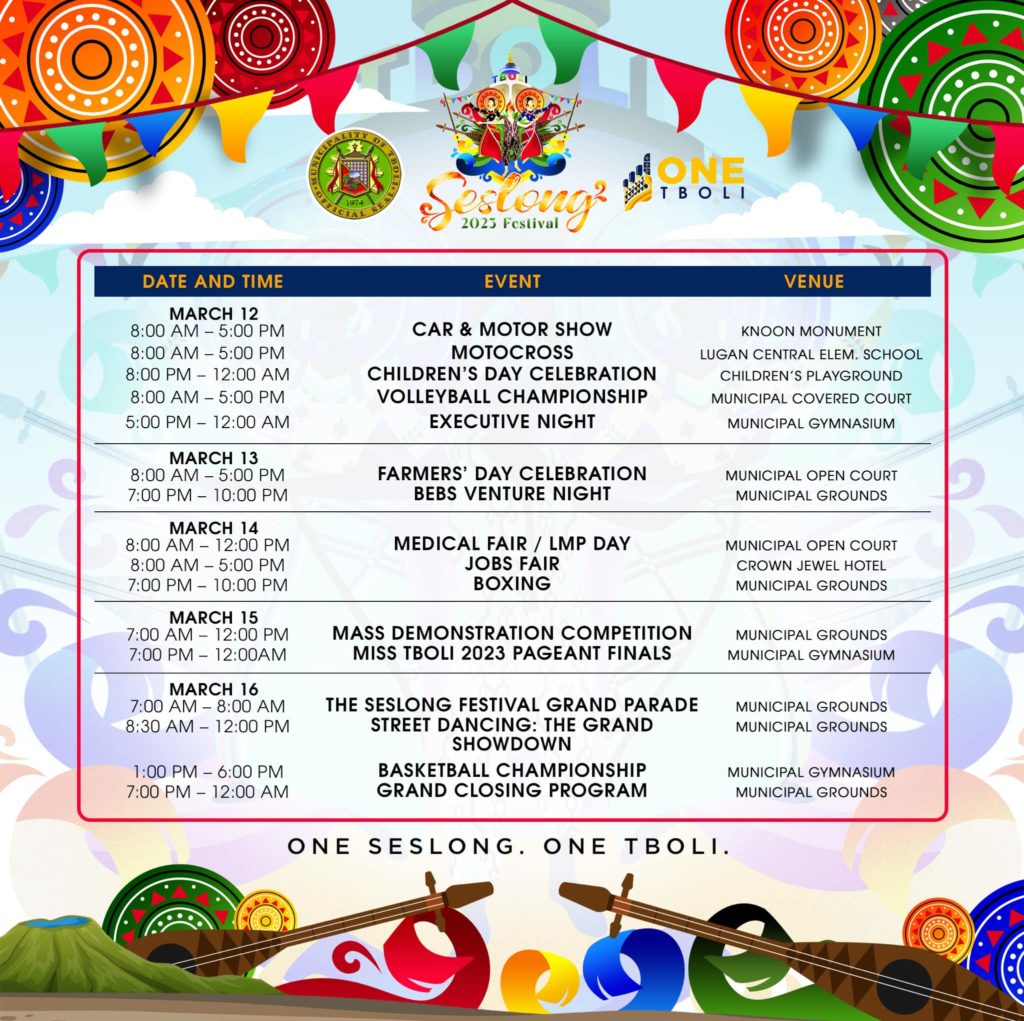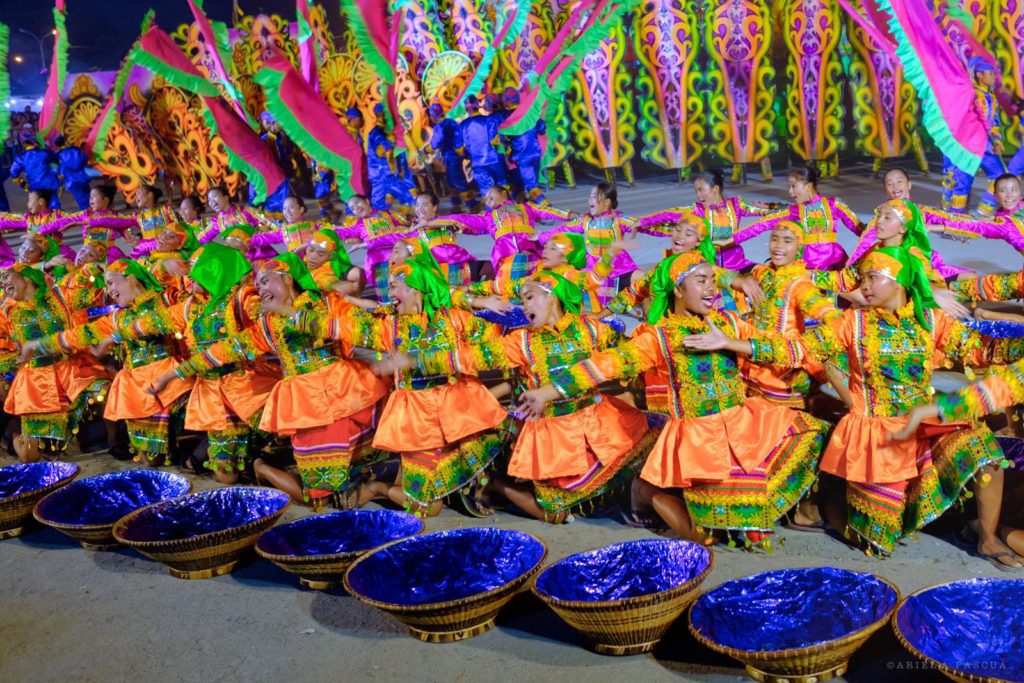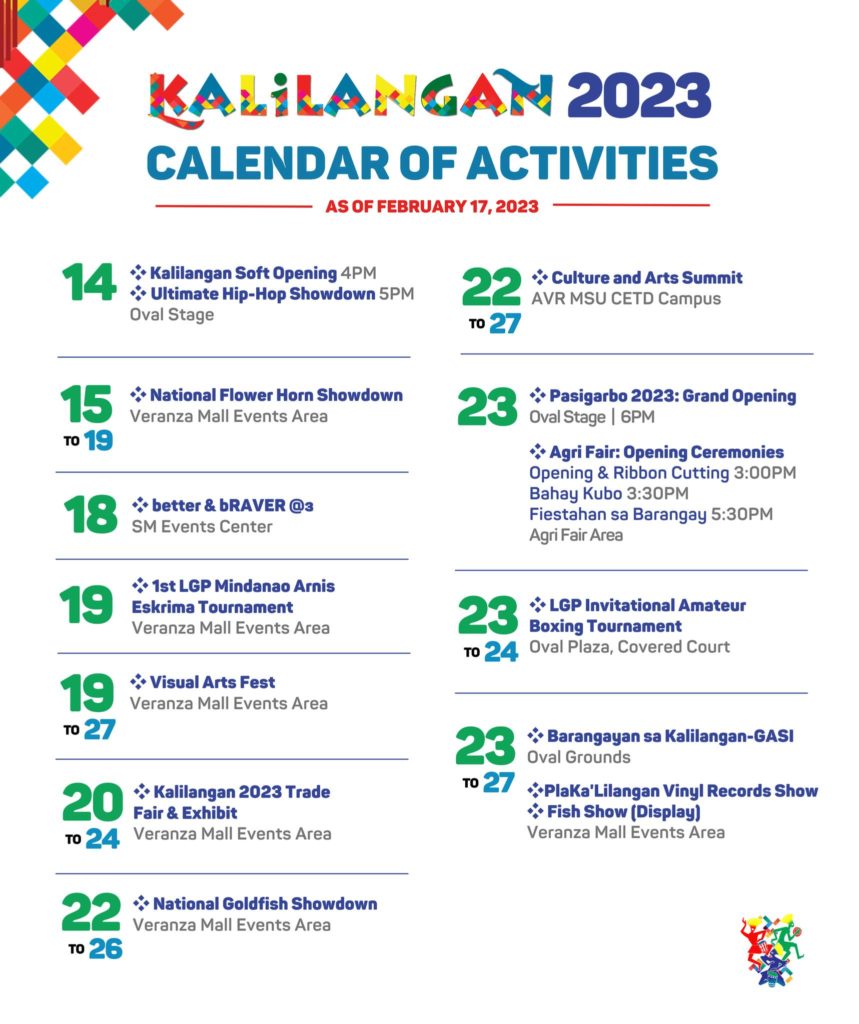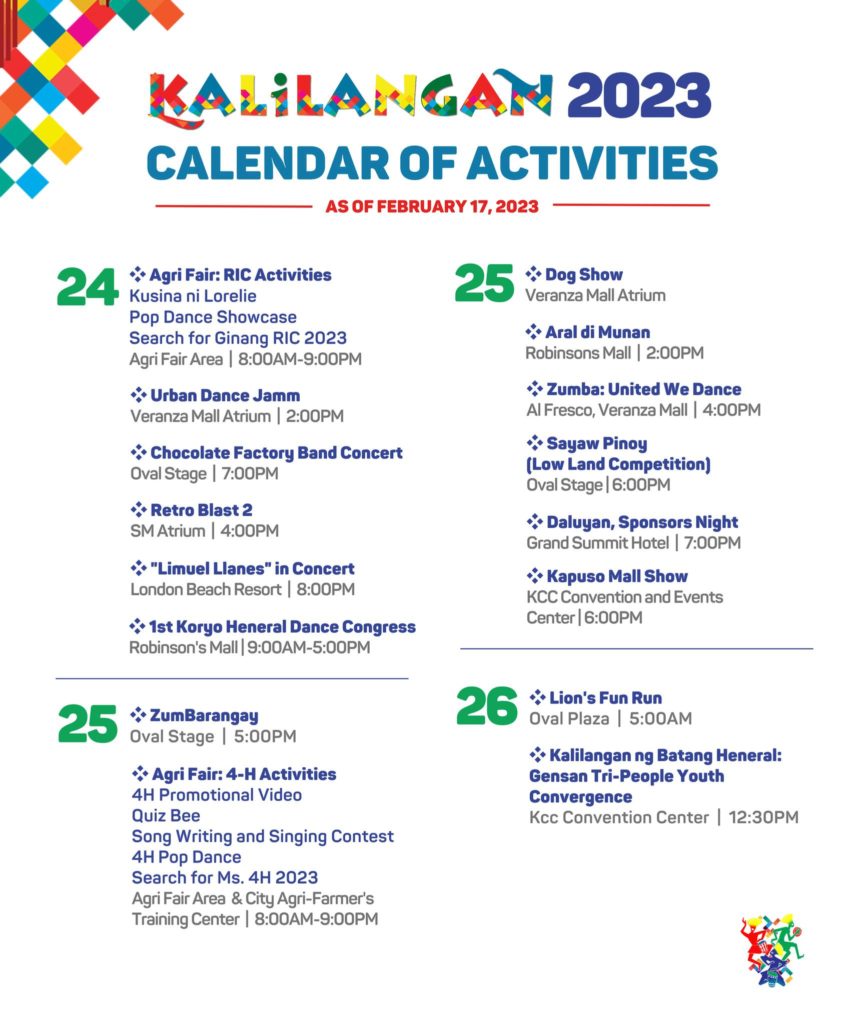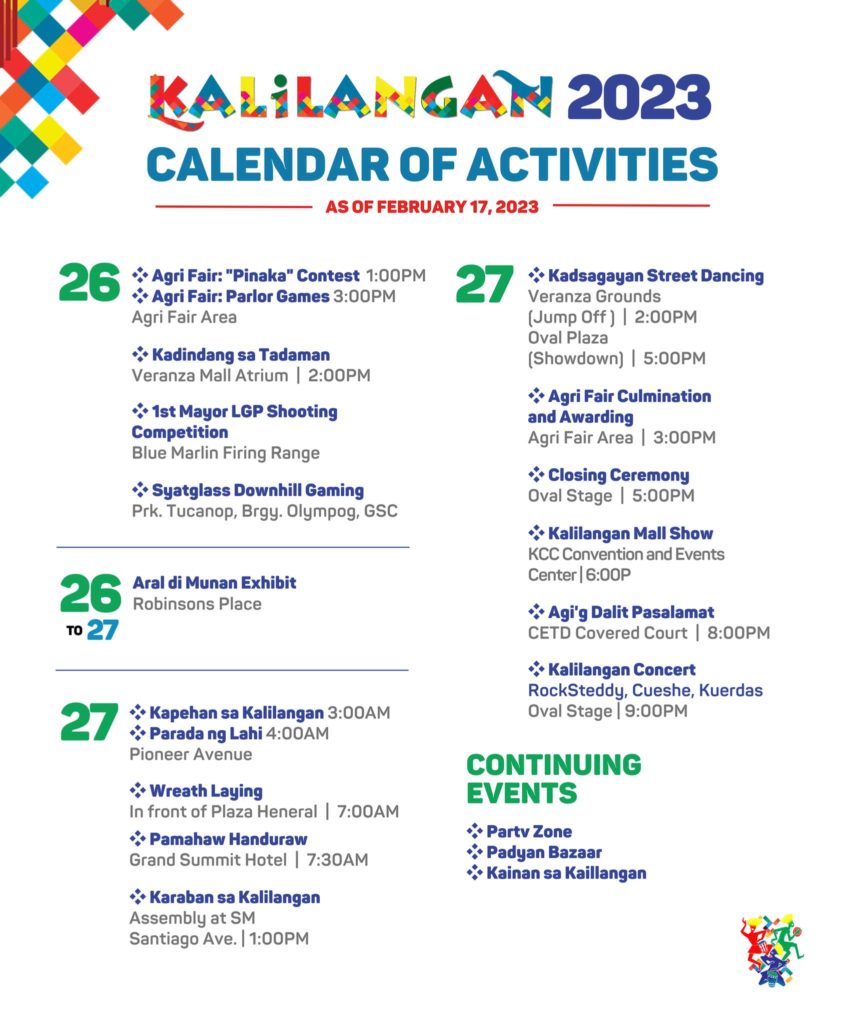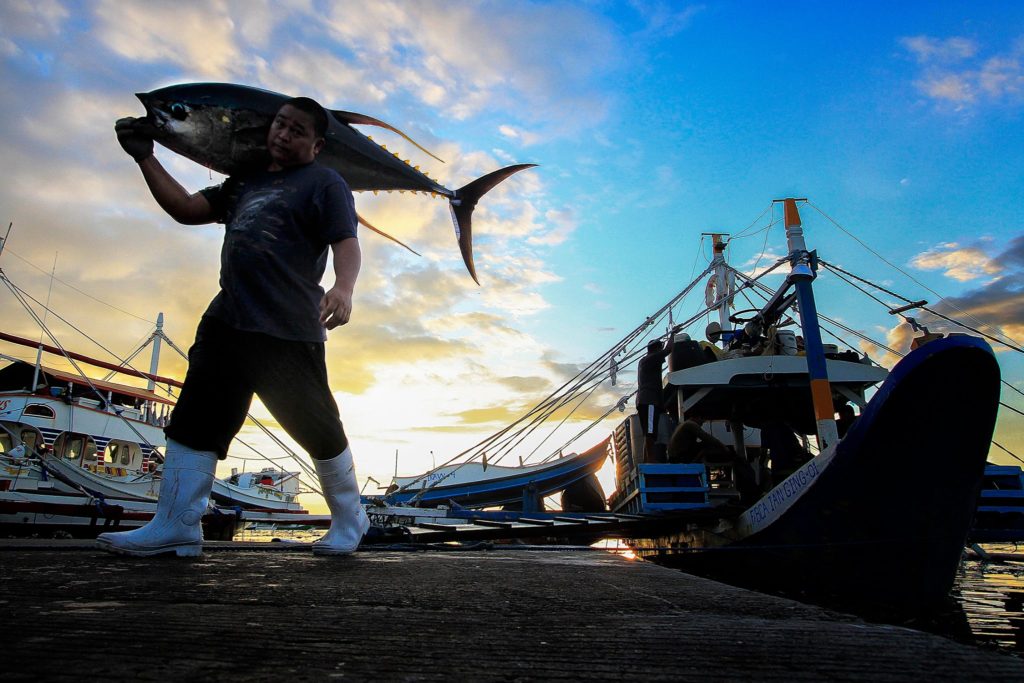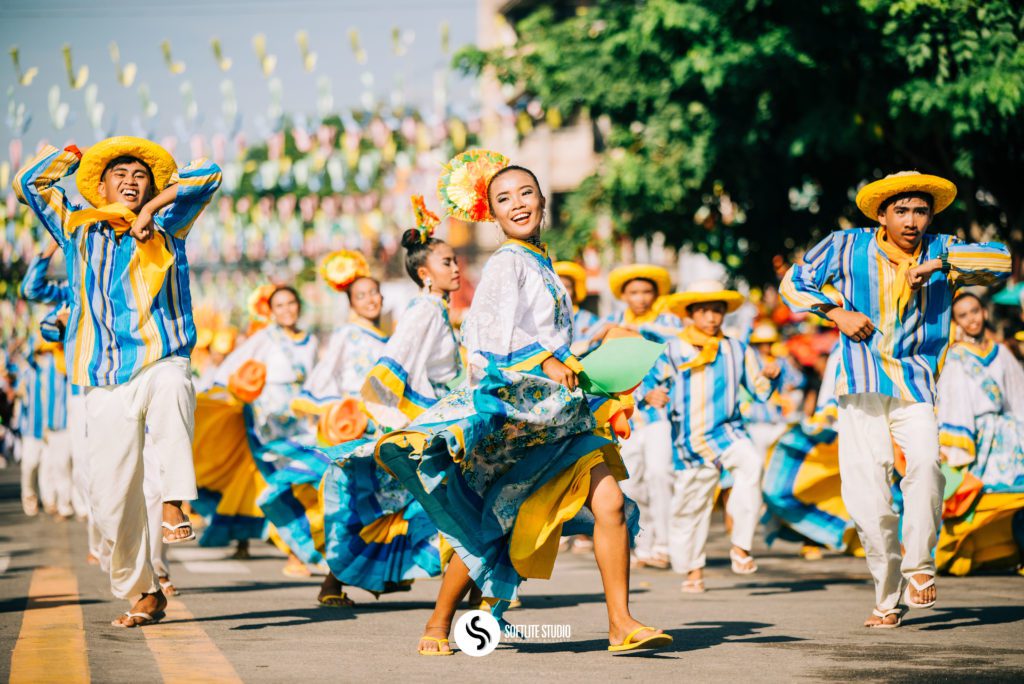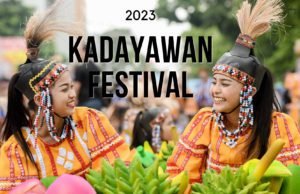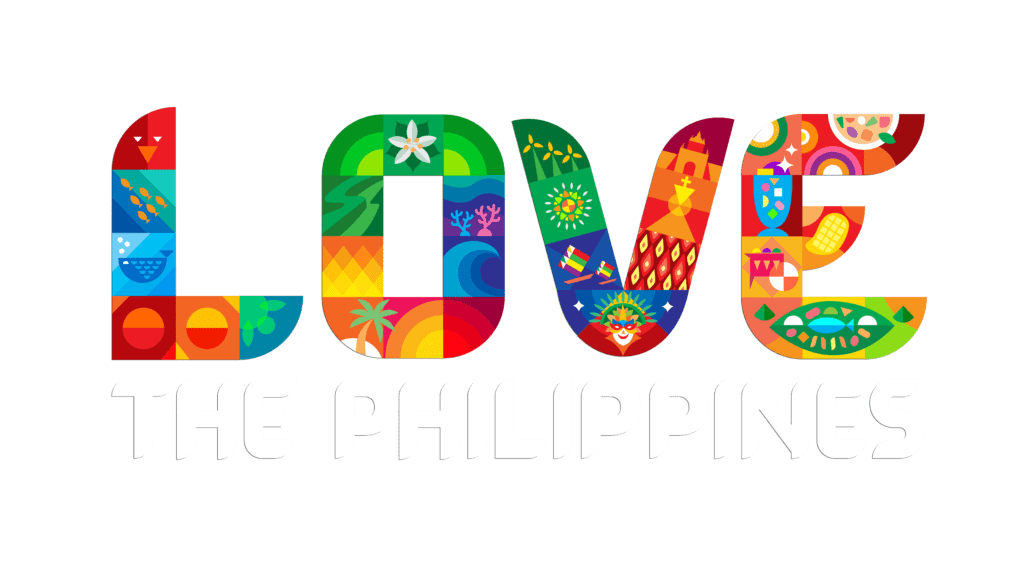20+ Most Visited Festival in the Philippines
Most Visited Festival in the Philippines
The Philippines is a country rich in culture and tradition, and one of the best ways to experience this is through its various festivals. From north to south, the Philippines is home to a diverse array of festivals showcasing different regions’ unique customs and practices. This article will take a closer look at the various festivals in the Philippines, including a comprehensive list of festivals that should not be missed.
1. Ati-Atihan Festival (Aklan)
The Ati-Atihan Festival is an annual event held in the province of Aklan in the Philippines. It is a celebration of the local Ati tribe and their customs and traditions. The festival features colorful and vibrant parades, traditional dances, and musical performances. It also includes a religious aspect, with a procession of participants dressed in indigenous costumes and masks paying homage to the Sto. Niño (Holy Child) is the festival’s patron saint. The festival is typically held in January and attracts thousands of visitors yearly. It is a unique blend of indigenous and Catholic cultures and a celebration of the rich heritage and culture of the Aklan province.
2. Sinulog Festival (Cebu)
The Sinulog Festival is an annual event held in Cebu, Philippines to honor the Santo Niño, a religious icon that represents the Child Jesus. The festival takes place on the third Sunday of January and features a grand parade, street dancing, and religious ceremonies. The highlight of the festival is the Sinulog Dance, a colorful and energetic dance that is performed by participants dressed in traditional Cebuano costumes. The festival also includes other cultural performances, food fairs, and live music. The Sinulog Festival is a major tourist attraction in Cebu and draws thousands of visitors from all over the world each year.
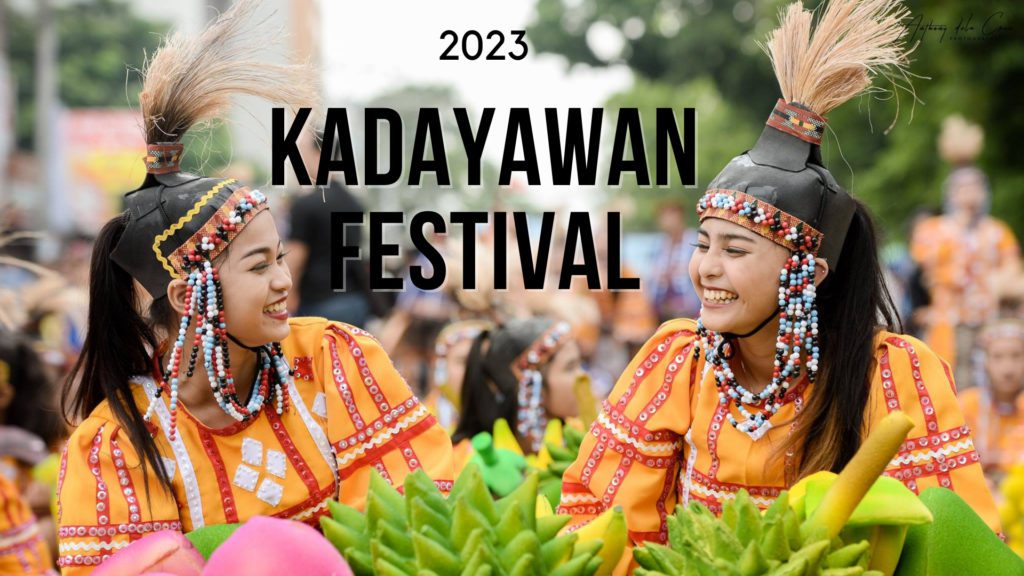
3. Kadayawan Festival (Davao)
The Kadayawan Festival is an annual celebration in Davao City, Philippines that showcases the rich culture and heritage of the indigenous tribes in the region. The festival features a variety of events including street dances, parades, and exhibits that highlight the traditional customs and practices of the local communities. The highlight of the festival is the “Indak-Indak sa Kadalanan” or street dancing competition, where different tribes compete in colorful and lively performances. The festival is also a celebration of the bountiful harvest and the beauty of nature, with events such as the “Hiyas ng Kadayawan” beauty pageant and the “Pamulak sa Kadayawan” floral and fruit float parade. The Kadayawan Festival is a vibrant and exciting event that draws visitors from all over the country and the world.
4. MassKara Festival (Bacolod)
The MassKara Festival is an annual event held in Bacolod City, Philippines that celebrates the city’s culture and history. The festival is known for its colorful and lively street dances, parades, and competitions featuring participants dressed in elaborate costumes and masks. The event also includes live music and entertainment, food and drink vendors, and various cultural activities and displays. The festival typically takes place in October and is attended by thousands of locals and tourists.
5. Pahiyas Festival (Quezon)
The Pahiyas Festival is a religious and cultural celebration that takes place annually in the Philippines in the town of Lucban, Quezon. It is held in honor of San Isidro Labrador, the patron saint of farmers, and is celebrated on the 15th of May. The festival is known for its colorful and elaborate decorations made from various agricultural products such as rice stalks, fruits, and vegetables. The streets are lined with colorful kakanin (rice cakes), and locals compete to see who can create the most intricate and beautiful displays. This Festival in the Philippines (Quezon) also features parades, dances, and other cultural performances, as well as traditional food and drinks. It is a popular tourist attraction and draws tourists from the Philippines and abroad.
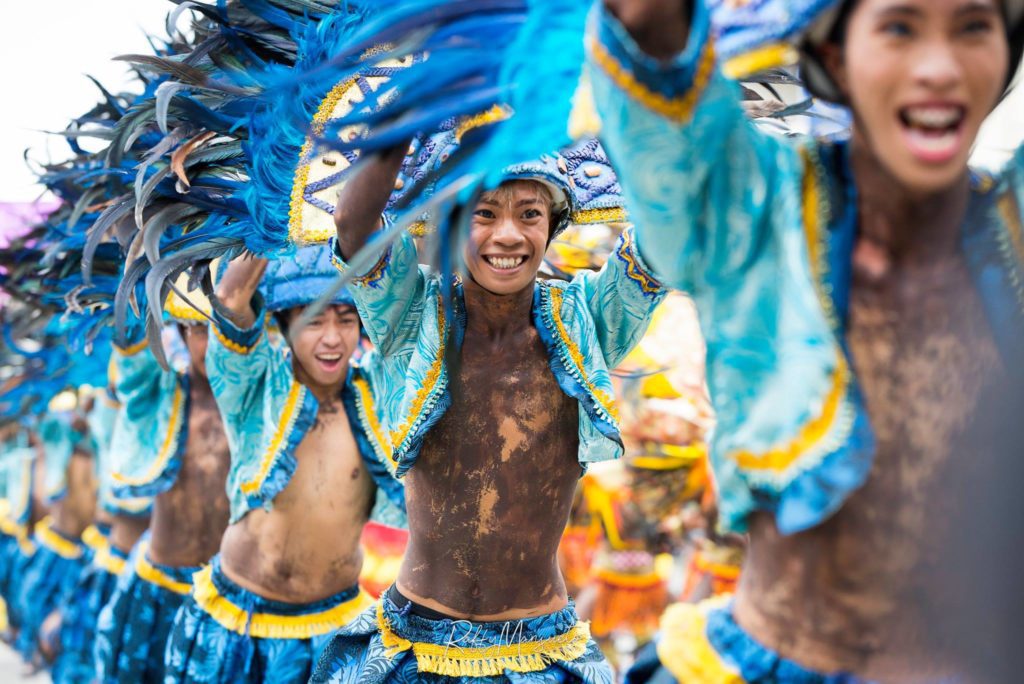
6. Dinagyang Festival (Iloilo)
Dinagyang Festival is a religious and cultural festival held annually in Iloilo City, Philippines, on the fourth Sunday of January. The festival is a celebration of the arrival of the Malay settlers in Iloilo and the conversion of the Ati people, the indigenous inhabitants of the island, to Christianity. It features a street dance competition, where participating tribes dressed in colorful costumes and body paint perform choreographed dances to the beat of drums, accompanied by music and other instruments. The festival in the Philippines (Iloilo) also includes a religious procession, a reenactment of the Ati-Atihan, and a variety of other activities such as food fairs, parades, and cultural performances. The festival is a showcase of the rich culture and history of Iloilo, and attracts thousands of tourists from all over the world each year.
7. Moriones Festival (Marinduque)
The Moriones Festival is a religious and cultural festival that takes place annually during the Holy Week on the island of Marinduque in the Philippines. The festival is celebrated in honor of Saint Longinus, a Roman soldier who is said to have converted to Christianity after being struck in the eye by a spear while witnessing the crucifixion of Jesus Christ.
The festival is characterized by colorful costumes and masks worn by participants, who are known as “Moriones.” These costumes and masks are based on the traditional depiction of Saint Longinus as a soldier with a bandaged eye. The Moriones also carry wooden spears and shields, and some even wear armor.
The festival features a number of activities, including a reenactment of the Passion of Christ, processions, and a search for the “Longinus” figure, who is said to be hiding on the island. The event attracts thousands of visitors from all over the Philippines and abroad.
The Moriones Festival is an important cultural and religious event for the people of Marinduque, and is considered one of the most significant festivals in the Philippines. It is a reflection of the island’s rich history and cultural heritage, and is celebrated with great enthusiasm and devotion.
8. Panagbenga Festival (Baguio)
The Panagbenga Festival, also known as the Baguio Flower Festival, is an annual event held in Baguio City, Philippines. The festival is celebrated during the month of February, and is meant to showcase the city’s abundant flowers and to promote tourism. This festival in the Philippines (Baguio) features a parade of floats adorned with different types of flowers, a street dance competition, and various cultural performances. The word “Panagbenga” is a Kankanaey term that means “season of blooming.” The festival is a major event in Baguio City, and is attended by both locals and tourists alike.
9. Pintados-Kasadyaan Festival (Leyte)
The Pintados-Kasadyaan Festival is a cultural and religious festival held annually in the province of Leyte, Philippines. The festival is celebrated in honor of the patron saint of the province, Sr. Santo Niño, and is celebrated on the 29th of June, the feast day of the saint.
The festival features a parade of participants who are heavily tattooed, hence the name “Pintados” (meaning “tattooed” in Spanish). The parade is followed by a street dance competition where participants perform traditional dances in colorful costumes, accompanied by live music.
The festival also features religious ceremonies such as the “Kasadyaan” (meaning “merriment” in Waray language), a thanksgiving mass held in honor of the patron saint. The festival also includes a parade of floats that depict the history and culture of the province.
The Pintados-Kasadyaan Festival is considered as one of the most popular festivals in the Visayas region, attracting thousands of tourists and locals every year. It is also considered as one of the grandest festivals in the Philippines.
10. Sandugo Festival (Bohol)
It is the Sandugo Festival is an annual celebration that is held in Bohol, the province of Bohol, Philippines. It is a celebration of the historic blood covenant (Sandugo) between the indigenous chieftain Datu Sikatuna and Spanish Explorer Miguel Lopez de Legazpi in 1565. This event marked the beginning of friendly relations between the native Boholanos and the Spanish colonizers, and is considered a symbol of unity and friendship.
The festival is held every July in Tagbilaran City, the capital of Bohol, and features a variety of cultural and historical activities, including parades, dances, and reenactments of the blood compact ceremony. The highlight of the festival is the reenactment of the blood compact, where actors portray the characters of Datu Sikatuna and Miguel López de Legazpi, and perform the traditional ritual of mixing their blood in a small vessel.
The Sandugo Festival is a popular event among both locals and tourists, and is considered one of the most important cultural festivals in the Philippines. It not only serves to commemorate the historical event, but also promotes the rich culture and heritage of the Boholanos.
11. Higantes Festival (Angono, Rizal)
The Higantes Festival is an annual cultural event held in Angono, Rizal, Philippines. It is celebrated on the 23rd of November, the feast day of Saint Clement, the patron saint of Angono. The festival features giant papier-mâché figures, known as Higantes, that are paraded through the streets of the town. These figures can reach up to 20 feet in height and are decorated with colorful clothing, accessories, and masks. The festival also includes traditional Filipino dances, music, and food. The Higantes Festival is considered one of the most popular cultural festivals in the Philippines and is a major tourism attraction for the town of Angono.
12. Tuna Festival (General Santos City)
Tuna Festival, also known as Tuna Capital of the Philippines Festival, is an annual event held in General Santos City, Philippines. It celebrates the city’s status as a major producer of tuna and promotes the fishing industry. The festival features a variety of activities such as street parades, cultural shows, beauty pageants, and cooking competitions. The highlight of the festival is the Tuna Festival Street Dance Competition where groups of dancers perform to the beat of traditional drums while dressed in colorful costumes inspired by the tuna industry. The festival is typically held in September and attracts both local and international visitors.
13. Kaamulan Festival (Bukidnon)
The province of Bukidnon in the Philippines is the site of the Kaamulan Festival, a cultural celebration that takes place annually. The month of February is set aside each year to commemorate this event, which is regarded as one of the nation’s oldest and most genuine celebrations of its indigenous culture. The festival is a showcase of the rich cultural heritage of the seven ethnic tribes that inhabit the province of Bukidnon. These ethnic tribes are the Talaandig, Higaonon, Manobo, Matigsalug, Tigwahanon, and Umayamnon, as well as Bukidnon itself.
At this year’s festival, attendees will have the opportunity to observe and participate in a wide range of cultural activities, including a parade of colorful costumes, traditional dances, music, and games. A traditional horseback riding competition known as the “Pintakasi” and a pageant for tribal princesses known as the “Miss Kaamulan” are also part of the event.
The “Kaamulan sa Lumadnong Dabaw” or “Gathering of the Indigenous Peoples of Bukidnon” is the most exciting part of the festival. This is where all seven of the province’s indigenous groups get together to share their history, customs, and culture with one another. The event also serves as a demonstration of the cohesiveness and concord that exists among the various ethnic groups that make up the province.
Not only is the Kaamulan Festival a celebration of the province’s cultural heritage, but it is also an opportunity to promote environmentally responsible tourism in the province of Bukidnon. It brings in tens of thousands of tourists every year, all keen on learning about the diverse customs and practices of the native people who originally inhabited the region of Bukidnon.
14. Aliwan Fiesta (Manila)
Aliwan Fiesta is an annual cultural and festival event held in Manila, Philippines. It is organized by the Manila Broadcasting Company and the Cultural Center of the Philippines. The event features a street parade and competition of different regional festivals from all over the Philippines, showcasing the country’s diverse culture and tradition. The festivals are judged based on their overall presentation, including the quality of costumes, props, and choreography. The event also includes live performances, food and merchandise vendors, and other cultural activities. The Aliwan Fiesta is typically held in April or May and attracts thousands of visitors each year.
15. Parada ng Lechon (Balayan, Batangas)
Parada ng Lechon is an annual festival in Balayan, Batangas, Philippines that celebrates the town’s lechon (roasted pig) industry. The festival features a parade of decorated lechon, traditional music and dance performances, and a lechon cooking competition. The event is typically held in June and draws thousands of visitors from all over the country. The festival is said to be one of the most colorful and vibrant festivals in the Philippines, as it showcases the rich culture, history, and traditions of the town of Balayan.
16. Longganisa Festival (Vigan City)
The Longganisa Festival is an annual festival held in Vigan City, Ilocos Sur, Philippines. The festival celebrates the city’s famous Vigan longganisa, a type of Filipino sausage made from ground pork mixed with spices and other ingredients. The festival features a variety of activities including a longganisa-making contest, a cooking competition, and a street parade featuring participants dressed in traditional costumes. The festival also includes cultural performances, food and craft fairs, and exhibits showcasing the history and culture of Vigan City. The festival is typically held in January and is a major tourist attraction for the city.
17. Sinadya sa Halaran Festival (Roxas City)
Sinadya sa Halaran is an annual religious and cultural festival celebrated in Roxas City, Philippines. It is held in honor of the patron saint of the city, the Our Lady of the Immaculate Conception, and features a variety of events such as religious processions, cultural presentations, and competitions. The festival is celebrated in the month of December and typically lasts for a week. It is considered as one of the grandest and most colorful festivals in the Visayas region of the Philippines, attracting thousands of tourists and local visitors every year.
18. Kalilangan Festival (Gensan)
Kalilangan Festival is a cultural and arts festival held annually in General Santos City, Philippines. The festival showcases the diverse cultural heritage of the people of General Santos City, known as Gensan, through a variety of performances, competitions, and exhibits. Kalilangan is from the root word ‘Kalilang’, a Maguindanaon word, meaning commemoration or celebration. The festival features traditional dances, music, and other forms of artistic expression, as well as food and craft fairs. The festival is usually held in February, and is considered one of the most important cultural events in the region.
19. Seslong Festival (T’boli)
It is an Tboli word that refers to the economic and social activities of Tboli people along with other non-ethnic and ethnic groups in exchange for items or barter in an exact location and time. It is typically accompanied with merrymaking.
Due to the interplay of cultures it demonstrates, the name was adopted as the title of the festival in the municipality in 1998.
20. Bangsi Festival (Maitum)
The Bangsi Festival is a celebration of the abundance of fish in the local area called “Bangsi” (flying fishing), which is a delicious specialty that is only found in Maitum in the province of Sarangani. Women’s organizations and a few entrepreneur-type individuals were producing “marinated bangsi” flying fish that were dried on the sun for half an hour and then marinated with local spices.
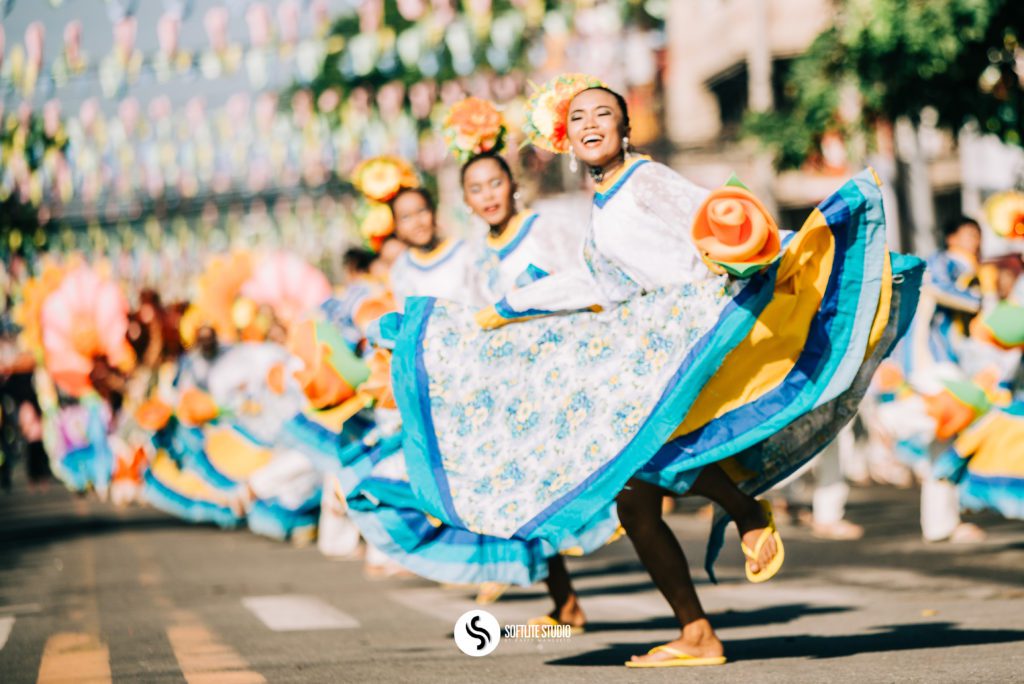
21. Hinugyaw Festival (Koronadal City)
Hinugyaw Festival is a colorful merrymaking depicting the evolution of the distinct cultures of the B’laan,Maguindanaons and Christians into a singular wave of rythms. The festival shows the festive spirit with street dancing parade,talent shows and beauty pageant,sports events and nightly street parties.
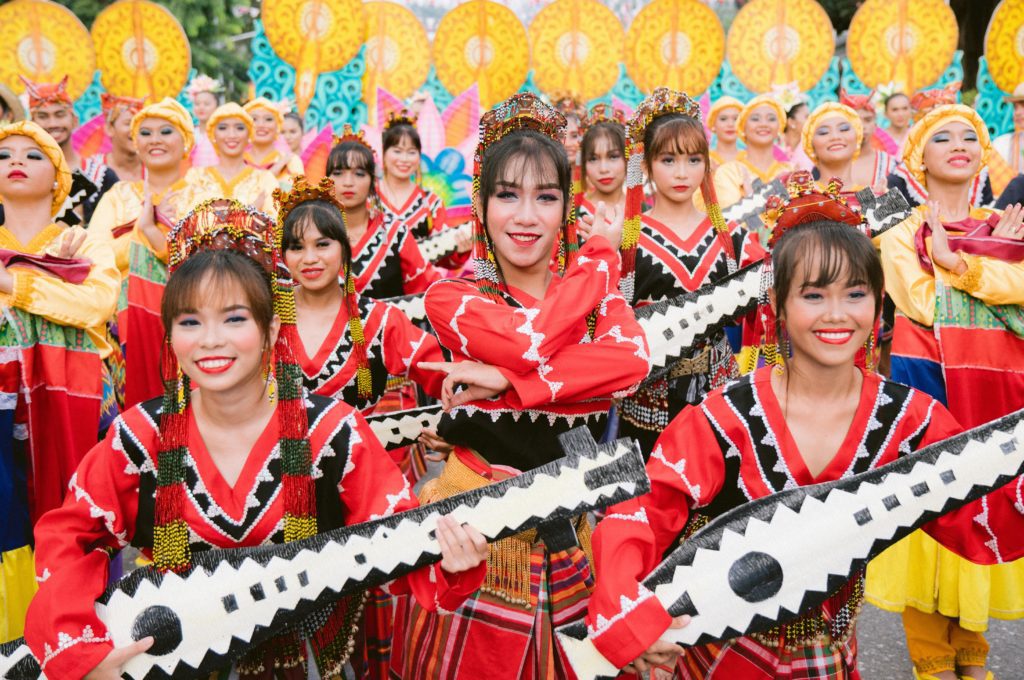
22. T’nalak Festival (South Cotabato)
The T’nalak Festival is an annual cultural and religious celebration held in South Cotabato, Philippines. It is held in honor of the T’boli tribe’s dreamweaver god, Fu Dalu, and celebrates the T’boli people’s rich cultural heritage and traditions. The festival features traditional dances, music, and performances, as well as colorful parades and competitions. The highlight of the festival is the T’nalak weave competition, where weavers compete to create the most intricate and beautiful T’nalak cloth. The festival also includes a trade fair, showcasing traditional T’boli products and crafts. The T’nalak Festival is typically held in July and is a major tourist attraction in South Cotabato.
23. Kalimudan Festival ( Sultan Kudarat)
Kalimudan Festival celebrates the founding anniversary of the province of Sultan Kudarat. It is the most important holiday for the LGU as well as the barangay. Sharing culture is the main theme here, with its message clear through the timeless songs and dances of the indigenous people.







